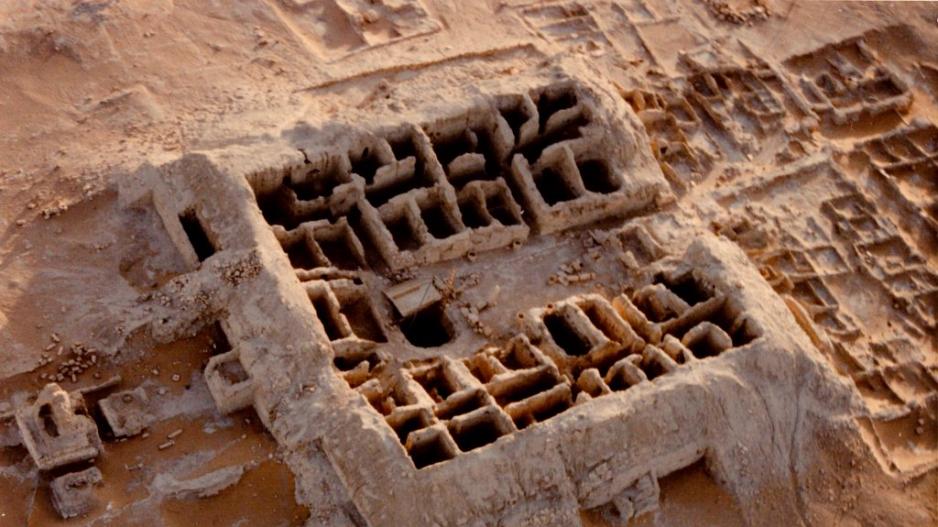Nestled in the northern reaches of Saudi Arabia, Al-Jawf is a region steeped in history, with a rich cultural heritage that stretches back over 8,000 years. Often overshadowed by the more famous historical sites in the Kingdom, Al-Jawf offers a remarkable window into ancient civilizations and provides a compelling glimpse into the development of human society in the Arabian Peninsula. From its archaeological treasures to its role in the trade routes of antiquity, Al-Jawf is a testament to the enduring legacy of human ingenuity and resilience.
A Rich Archaeological Tapestry
Al-Jawf is home to a wealth of archaeological sites that date back millennia. The most famous of these is the ancient city of Dumat al-Jandal, which flourished in the 1st century BCE and served as a crucial trading hub. Dumat al-Jandal was strategically located along the caravan routes that connected the Arabian Peninsula to the Levant, Mesopotamia, and beyond. It became a vibrant center for trade and commerce, where merchants exchanged spices, incense, and textiles, while also serving as a cultural crossroads where different civilizations met.
One of the most striking features of Al-Jawf’s archaeological landscape is the Qasr Marid, an ancient fortress that dates back to pre-Islamic times. The fortress, built from stone, stands as a silent witness to the region’s tumultuous history. Its massive walls and commanding position reflect the strategic importance of the site and offer insights into the architectural prowess of its creators.
Ancient Settlements and Tombs
Beyond Dumat al-Jandal, Al-Jawf is dotted with a number of ancient settlements and burial sites that speak to the area’s long history of human habitation. Archaeologists have uncovered evidence of early farming communities, as well as complex burial structures, such as the Beidha tombs—stone-built burial chambers dating back to the Bronze Age. These tombs offer important clues about the spiritual beliefs and burial practices of the ancient peoples of the region.
In addition to the tombs, the area is home to a series of rock art sites featuring carvings and petroglyphs that provide insights into the daily life, animals, and symbolic practices of the early inhabitants of Al-Jawf. These ancient artworks continue to fascinate researchers, as they offer a glimpse into the minds and imaginations of people who lived in this region thousands of years ago.
Al-Jawf and the Evolution of Agriculture
One of the most intriguing aspects of Al-Jawf’s history is its early development of agriculture. The fertile lands of the region, fed by ancient underground water sources, allowed early settlers to practice farming long before other regions in the Arabian Peninsula. Evidence of ancient irrigation systems, such as the Ayn Badiya irrigation system, shows the ingenuity of these early civilizations in harnessing water resources to cultivate crops in an arid environment. This early agricultural prowess laid the foundation for the region’s later economic prosperity.
A Modern Revival
Today, Al-Jawf is undergoing a renaissance, as Saudi Arabia seeks to preserve its ancient heritage while also integrating the region into the nation’s broader economic and cultural future. The Saudi Vision 2030 initiative, which aims to diversify the economy and promote tourism, has recognized the potential of Al-Jawf as a key destination for cultural and historical tourism. The government has invested in the preservation of archaeological sites and the development of visitor-friendly infrastructure, ensuring that future generations will be able to experience the region’s unique historical legacy.
Aslo read: The Future of Tiruchirappalli: Growth, Opportunities, and Transformation
Conclusion
Al-Jawf may not be as well-known as other ancient sites in Saudi Arabia, but its 8,000-year-old history speaks volumes about the resilience and ingenuity of its people. From its ancient tombs and rock art to its role as a key trading post, Al-Jawf offers an unparalleled glimpse into the past. As Saudi Arabia continues to invest in preserving and promoting its heritage, Al-Jawf stands as a testament to the timeless human drive to adapt, innovate, and thrive in even the most challenging of environments.

